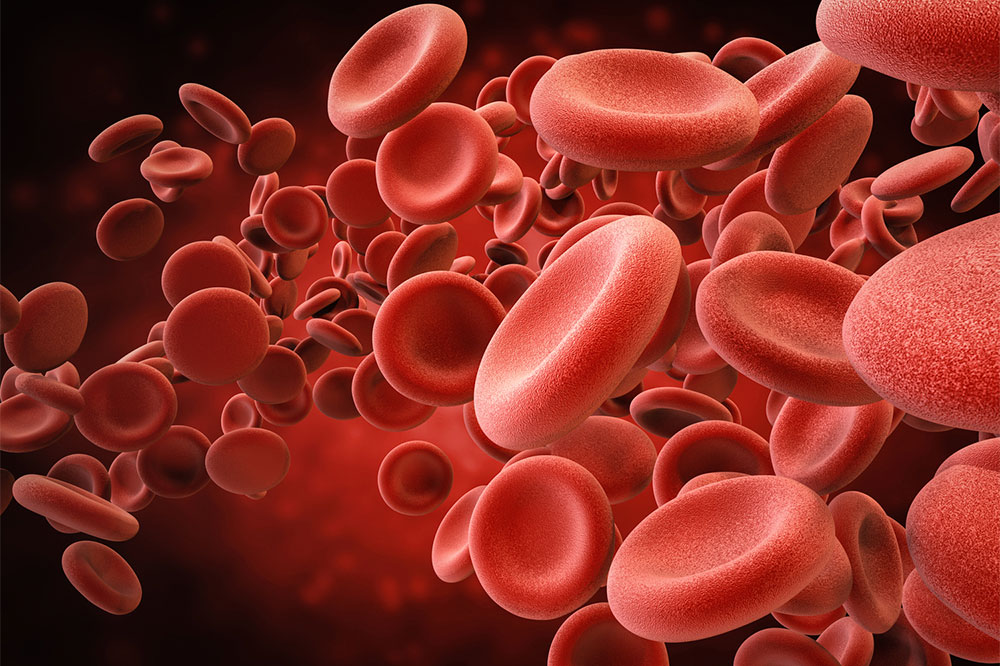
4 ways to prevent a bleeding disorder
A coagulopathy, or bleeding disorder, is a condition that makes one more prone to bleeding than usual. Blood transforms from a liquid to a solid during the clotting process, known as coagulation; however, this process is eliminated when a person is diagnosed with a bleeding disorder. A majority of bleeding problems are hereditary, although other related health illnesses can also be a causal factor. Following are some ways to prevent and manage the disorder:
Preventive measures
Although most bleeding diseases are hereditary and cannot be prevented, a healthy lifestyle can aid in managing and preventing consequences such as bleeding episodes. It is critical to make others around you aware of the condition so that appropriate action can be taken in the event of an emergency. Here are a few ways to prevent a bleeding disorder from worsening:
Physical activity
Joints can be strained due to a sedentary lifestyle, increasing the risk of internal bleeding. One great way to avoid pressure on the knees is to exercise. Follow a regular exercise routine which can include walking, running, jogging, swimming, or cycling. Nutritious food and daily exercise is the best way to remain healthy and fit. They strengthen muscles and bones. Exercises that could cause harm, such as contact sports, should be avoided by patients.
Maintain oral hygiene
Dental care and oral hygiene are essential for patients with hemophilia (a type of bleeding disorder). Gum disease and the build-up of dental tartar, which increases bleeding and accelerates decay, can be avoided by brushing and flossing daily. Visiting the dentist can avoid future dental problems. If oral hygiene is ignored, a vicious cycle of gum disease and bleeding will develop, worsening the condition.
Avoid high-intensity sports and activities
Avoid sports activities that might cause you to fall or injure yourself. It is always advisable to use safety equipment when participating in any activity. Kneepads, helmets, elbow pads, and safety belts help avoid injury from falls and other catastrophes.
Avoid sugary foods
High sugar foods like cakes, cookies, and aerated drinks have adverse effects on dental and physical health, further complicating an underlying bleeding condition. Much of the sugar consumed is added during the manufacturing or preparation of the meals. You should avoid sugar-sweetened beverages, such as sodas, energy, and sports drinks, as they are the most common sources of added sugar. Fruit juices are naturally high in sugar, but some companies add artificial colors and sweeteners to enhance the flavor.
Risk factors associated with a bleeding disorder
Blood transfusions
A blood transfusion is a procedure that involves receiving donated blood or blood components via an intravenous line (IV). Blood transfusions are used to restore depleted blood and its components and replenish blood that has been lost due to surgery or injury. If your body isn’t producing enough blood on its own, this therapy can help.
If you get a blood transfusion from a person with a bleeding disease, you are at risk of developing the condition.
Cancer
The risk of bleeding or thrombosis in a cancer patient is determined by the underlying kind of tumor and the anticancer treatment strategy. Tumor invasion of blood arteries and nearby organs, side effects of treatment options, and vitamin K deficiency are all typical causes of significant bleeding disorders.
Thrombocytopenia (a deficiency in platelets), thrombocytopathies (prolonged bleeding due to low platelet count), coagulation factor deficiencies, or increased fibrinolysis can all cause bleeding in cancer patients. This can be localized bleeding caused by tumor invasion or generalized bleeding caused by coagulation factor deficiencies, thrombocytopathies, or increased fibrinolysis or thrombocytopenia. The best way to address bleeding in cancer patients is to detect the exact cause.
Complications of a bleeding disorder
Having a blood disease such as hemophilia can lead to a variety of consequences:
Joint damage
Joint injury, which occurs after persistent bleeding into the joints, is one of the most common problems for bleeding disorder patients. This can be painful and result in swelling and deformity. Arthritis affects many patients, and joint replacements may be necessary.
Prophylaxis has been found to prevent joint injury and minimize joint hemorrhage. Bleeding joints should be treated as soon as possible to avoid chronic joint disease, functional impairment, and disability.
The most crucial step in lowering the risk of chronic joint disease is to treat bleeding as soon as possible. The objective is to stop the bleeding before the synovium is damaged by the accumulation of blood in the joint area.
Viral infections
In the past, for persons with hemophilia, a bleeding disease, blood-borne infections were a common side effect of therapy. Factor products were created utilizing huge plasma donor pools, and the procedure lacked special infectious agent screening. Many lives were lost as a result of these issues. This highlighted the need to modify the production and screening methods.
Techniques for producing clotting factors from animal cells have been developed by scientists. In treating bleeding diseases, plasma-derived products continue to play an essential role. It is advised to consult a specialist right after the symptoms of the disorder are experienced. Timely diagnosis and treatment can help manage the condition, preventing its progression.


